Growth Engineer Tech Stack
What tools should a growth engineer be using?
Choosing the right tool stack is essential for executing growth experiments efficiently. Below is a structured overview of tools used by growth engineers, grouped by category and adjusted for company size and stage.
Analytics & Event Tracking
These tools help you understand user behaviour, track key events, and uncover bottlenecks in the funnel.
Early-Stage:
Plausible – Lightweight, privacy-friendly web analytics.
Fathom – Simple, fast analytics with a focus on privacy.
PostHog – Self-hosted or cloud analytics with product-focused event tracking.
Growth-Stage:
Mixpanel – Advanced segmentation, funnel analysis, and retention tools.
Amplitude – Deep analytics for cohorts, engagement, and user journeys.
Google Analytics 4 – Free but complex tool with cross-platform tracking capabilities.
Experimentation & A/B Testing
Tools that allow you to test hypotheses, validate ideas, and measure the impact of changes.
Early-Stage:
PostHog Experiments – Basic A/B testing functionality within the analytics platform.
Growth-Stage:
Optimizely – Enterprise-grade experimentation suite with advanced targeting.
VWO – A/B testing, multivariate testing, and personalisation tools.
LaunchDarkly – Feature flag management with experimentation capabilities.
Split.io – Data-driven experimentation and rollout management for engineers.
Feature Flagging & Rollouts
These tools help teams deploy features gradually and control releases without needing to redeploy code.
Early-Stage:
ConfigCat – Simple, scalable feature flags with a generous free plan.
Unleash – Open-source feature management tool for developers.
Growth-Stage:
LaunchDarkly – Enterprise-ready platform for controlled rollouts and experimentation.
Flagsmith – Open-source feature flagging and remote config service.
Messaging & Lifecycle Automation
Enable targeted communication based on user behaviour, lifecycle stage, and engagement triggers.
Early-Stage:
Customer.io – Behavioural email automation and workflows.
MailerLite – Easy-to-use email marketing with automation tools.
Intercom – Messaging, onboarding and support automation.
Growth-Stage:
Braze – Multichannel engagement and messaging orchestration.
Iterable – Comprehensive customer journey automation and analytics.
Data Infrastructure & Warehousing
These tools help teams centralise, transform, and analyse data efficiently at scale.
Early-Stage:
Airbyte – Open-source data integration platform.
Fivetran – Managed data pipelines with automated schema migrations.
BigQuery – Scalable and serverless data warehouse from Google.
Snowflake – Cloud-native data warehouse with flexible storage and compute.
Growth-Stage:
dbt – Data modelling tool for analytics engineers.
Segment – Customer data infrastructure and event routing layer.
Session Recording & Behaviour Analysis
Tools that let you watch how users interact with your product and identify usability friction.
Hotjar – Heatmaps, session recordings, and feedback tools.
FullStory – Advanced session replay with event tracking.
Smartlook – User behaviour recording and analytics.
Identity & Access Management
Supports secure authentication and personalisation efforts, often necessary for targeting and experimentation.
Early-Stage:
Auth0 – Identity as a service with quick integrations.
Clerk – Authentication and user management for modern apps.
Growth-Stage:
FusionAuth – Developer-focused identity platform with self-hosting options.
Choosing Based on Stage
As companies grow, their requirements evolve. Here’s how tool choices typically scale:
| Stage | Key Priorities | Tool Strategy |
|---|---|---|
| Pre-Product | MVP learnings, fast iteration | Use lightweight, free tools like: PostHog, Plausible, Hotjar |
| Early-Stage | Basic funnel analysis, email journeys | Combine analytics with messaging: Mixpanel + Customer.io |
| Growth-Stage | Robust experimentation, cohort analysis | Use integrated stacks: Amplitude, LaunchDarkly, Segment |
| Enterprise | Scale, security, compliance | Adopt enterprise-grade vendors with audit trails and SSO |
How do you become a Growth Engineer?
Growth engineering is no longer just a niche technical role buried inside marketing or product teams. It’s becoming a critical function across the business — from acquisition and retention to sales enablement and process optimisation. And the rise of AI, particularly generative AI (GenAI), has only accelerated the demand.
What's the different between Marketing and Growth Engineering?
Marketing and growth engineering often overlap, especially in modern product-led companies — but they are not the same thing. One focuses on narrative, brand, and demand. The other focuses on systems, experiments, and optimisation.
Are their any Growth Engineering qualifications?
Can you actually get qualified in growth engineering? The short answer is — not in the traditional sense. You won’t find a standardised degree or universally recognised certification. But that doesn’t mean there’s no path in.

